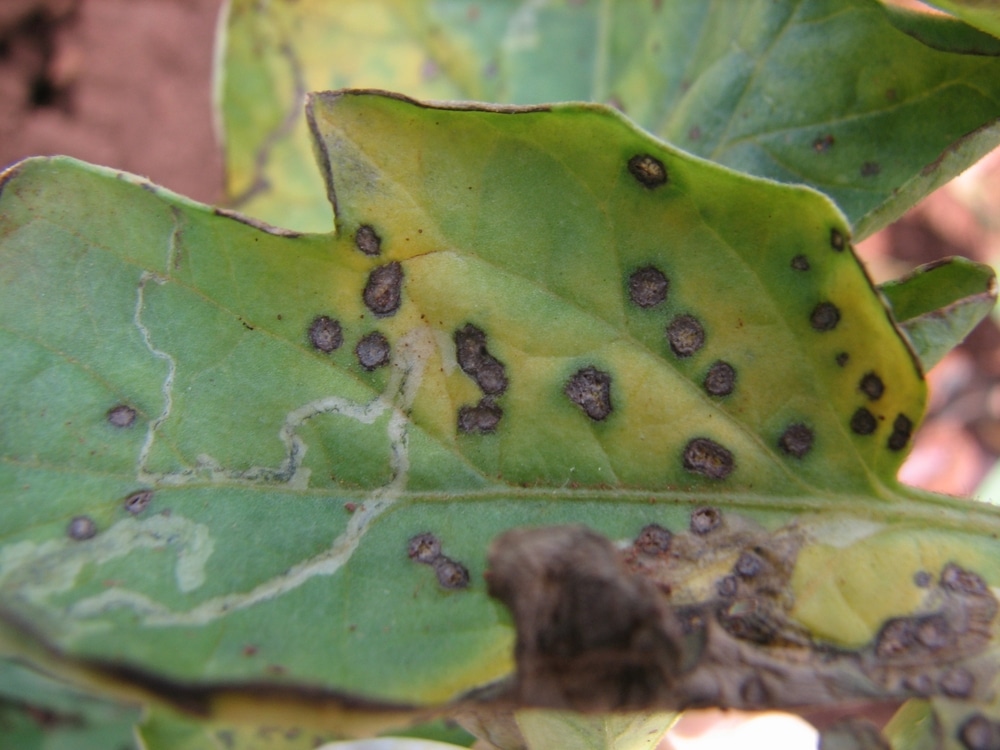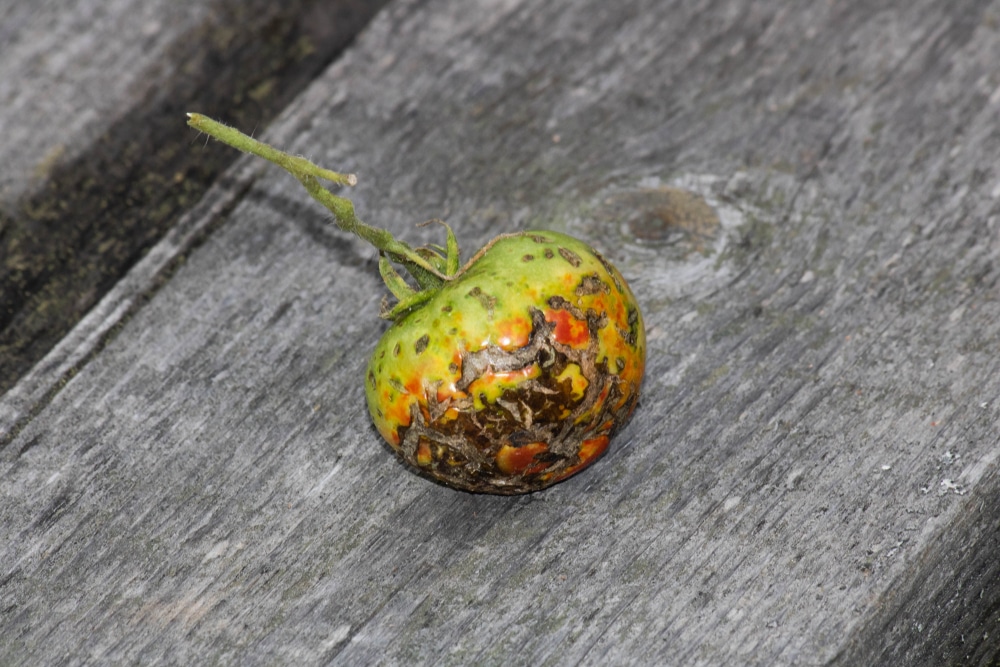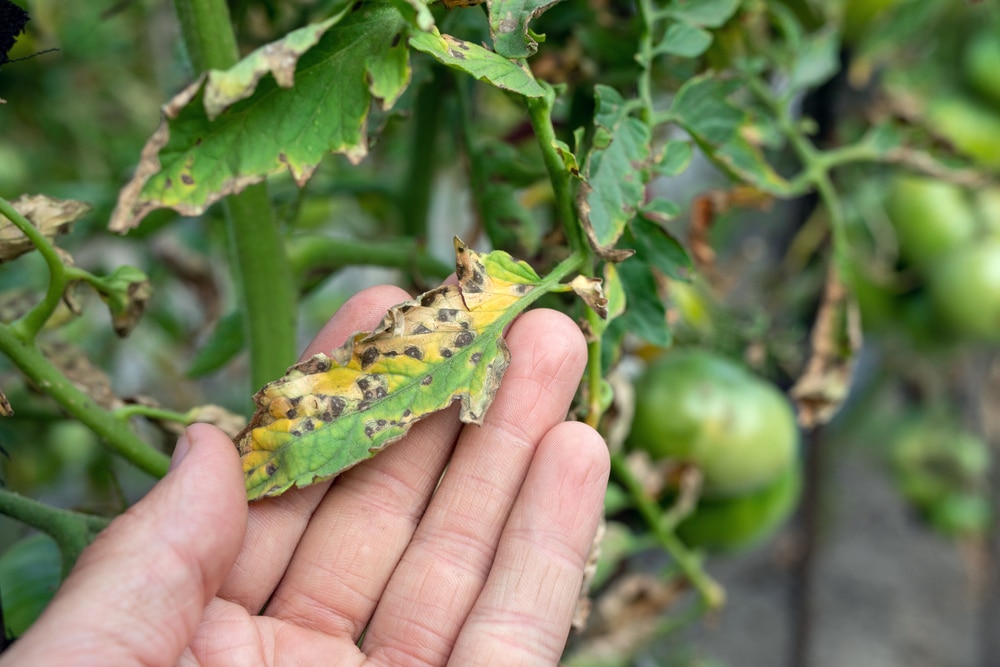A favorite among home growers, tomatoes are a warm-season annual that produces the classic red fruit we all know and love. There’s no denying that tomatoes are low-maintenance, and even new to gardening can have success with them.
However, even the most experienced growers may experience some problems from time to time. Tomatoes may get spindly, have yellow leaves, or sometimes develop black leaves.
Normally, healthy tomato plants have green and vibrant leaves attached to thick stems. The plant’s foliage is an integral part of the photosynthesis process, providing energy to the rest of the plant. So, when you see black leaves on your tomato plants, what does this mean?
If you’ve noticed some of your tomato plants have started to develop black leaves, read on to learn more about why this happens, and see if there’s anything else you can do to save your tomato plants.
Reasons Why Tomato Plants May Develop Black Leaves
Photosynthesis plays a huge role in the growth and development of tomato plants, as it does for all plants. The process involves converting sunlight into chemical energy the plant can use to grow. Tomatoes need a lot of sunlight to produce fruit, so they are especially susceptible to problems when they don’t get enough light.
Bacterial speck, septoria leaf spot, late blight, or bacterial canker could be some of the few reasons behind those black leaves. These are fungal diseases that can affect tomatoes, and they are usually the result of too much moisture on the leaves. Let’s more about these, along with different ways to treat and prevent these fungal diseases.
Bacterial Speck
This fungal disease is common in different parts of the world – and it happens regardless of the type of tomato plant and the environment it grows in. You’ll know that your tomato plant has bacterial speck when you notice that its leaves are starting to show black spots both on the leaf’s surface and its underside. It’s more prominent on the undersides, and these spots will usually have a yellow ring surrounding them.
Unfortunately, this could also affect the fruit itself. When left untreated, the black spots will then spread not just to the leaves but could even turn the entire fruit black in color.
Septoria Leaf Spot
Septoria leaf spot is another fungus that starts off as yellow spots. Eventually, these yellow spots will then turn dark brown to black. Once the fungus has spread, you’ll notice that your tomato plant’s leaves will start to dry out, curl, and finally drop off.
This fungal disease is usually caused by too much moisture – from overwatering or heavy rainfall.
When not addressed immediately, septoria leaf spot can significantly affect the plant, and it may not be able to produce fruit at all.
Late Blight
This is every gardener’s worst nightmare. It only takes one plant to be infected for the entire crop to be affected as well. Late blight is a serious fungal disease that could cause your tomato plant’s leaves and stems to turn black.
Black patches and spots will also start to appear on the plant’s leaves, and these could eventually turn the entire leaf yellow. The spots will begin to enlarge, and the leaves will eventually die and fall off.
This fungal disease is most commonly seen during humid and wet weather conditions – which is why it’s more prevalent during late summer and early fall.
Bacterial Canker
This fungal disease targets the foliage stems and the fruits of your tomato plant. It usually starts off with the discoloration of leaves. Initially, its tips will show a dark brown hue, but once the disease progresses, it’ll take over the rest of the leaves, leaving nothing but black leaves behind.
It’ll continue to affect the veins, stems, and the fruits – but instead of black spots, it leaves white spots behind.
The most common cause of bacterial canker is an infected pruning wound. It could also be caused by contaminated soil or even an unhealthy seed.
Treating and Preventing Black Leaves on Tomato Plants
Since the majority of these fungal diseases are caused by too much moisture, one of the best ways to prevent them is by ensuring that your tomato plants don’t get waterlogged. Providing sufficient amounts of sunlight (6-8 hours) will also help as this will help the plant to dry out quickly.
If your tomato plants are already affected by one (or more) of these diseases, using a fungicide is the best way to treat it. Carefully inspect and determine which kind of fungus affects your plant, and then look for a fungicide that could address it.
Alternatively, a baking soda and water solution can help fight fungal infection if you don’t want to use chemicals. Using 4 cups of lukewarm water, add and dilute 1 tablespoon of baking soda. Transfer to a spray bottle and carefully spray on the affected leaves. Repeat this process weekly until the fungus is gone.
It’s also important to practice good hygiene and cleanliness in the garden. This means getting rid of any dead or dying leaves, as well as properly disposing of them. While this might not seem like much, it could go a long way in preventing the spread of these diseases.
Cutting the affected leaves, if the disease hasn’t spread too much, can also help. This way, you can prevent the fungus from further infecting other parts of the plant.
Black Leaves Tomato Plants: Final Thoughts
Panic might start to set in once you see black leaves on your tomato plants. However, it’s essential to take a step back, assess the situation, and then take action accordingly.
Identify the fungal infection causing these black leaves, and from there, you’ll be able to determine the best course of action. It takes some effort on your end (and maybe some fungicide) but taking action as soon as you’ve noticed early signs increases your chances of saving your tomato plants.
With the correct care your plants will be healthy and you can get thick stems on your tomato plants.


